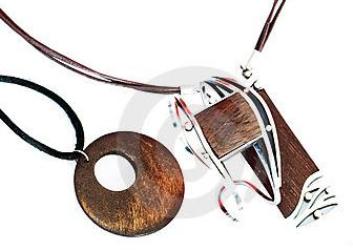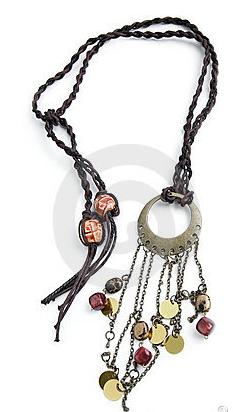It will stock 22K hallmarked gold, certified diamond, platinum, costume jewellery, astral gems and most importantly light weight handmade jewellery
%%
The recession may well be over, but the increasing prices of raw materials for jewellery manufacture have forced jewellers to look for other avenues for increasing sales. Thankfully, in terms of design and materials, the customer is receptive to innovation. Here’s a look at 5 alternative materials that jewellers should seriously consider, along with designers/brands that are already making inroads into them.
%%

%%
{{Titanium:}} It seems unlikely that a material that is used in hi-tech applications such as spacecraft manufacture would find its way into high jewellery. The reasons for titanium being used in jewellery are manifold - lustre, lightness, durability and hypoallergenic properties being the topmost. It can be anodized into different colours including a very classy black and easily combined with other materials and gemstones, allowing for flexible and vibrant designs. Presently, the material is rare and expensive, but newer manufacturing processes are on the anvil, which would make it cheap enough to use en masse. Designers like Wallace Chan have made titanium their strong point with sleek, lovely designs that are the pride of fashionista wardrobes.
%%
{{Glass: }}Delicate and ethereal – that’s the first impression that glass jewellery creates. From the designer’s point of view too, glass is a fluid material that results in exquisite designs. Glass is multifaceted, it can be used to incorporate a wide variety of colours and contrast to the silver and other materials used for trendy jewellery. The material is cheap, but glass jewellery designers agree that working with glass is time consuming and labour intensive – it has to be melted slowly and evenly to ensure the clarity of the colour, otherwise the colour burns out and scum and bubbles develop. The customer needs to be convinced of its strength and durability that comes from kiln annealing. Brands like Pandora have made a killing with glass beads used in their charm jewellery.
%%

%%
{{Wood: }}Jewellery that’s made from wood has a beauty that is completely governed by nature. Not only is wood a strong and durable material, it is also light and easy to wear. From the production and aesthetic point of view too, wood is incredibly striking. Each wood piece is different, so each piece of wooden jewellery is unique and cannot be replicated. Extraordinary jewellery pieces can be created from woods as old as 2000 years. Wood is almost living and combining it with silver, amber or tin brings out its aliveness. Though woodworking is expensive, the increasing demand for non-conventional jewellery means that wood jewellery is a good option to look at.
%%

%%
{{Stainless steel:}} Stainless steel has long been used in making watches and is now donning a new role in jewellery as well. A rough and tough, wear and tear resistant material that is highly ductile and malleable, stainless steel can be fashioned into wires, beads and faceted studs which resemble cut gemstones. The surface can be polished to a silvery lustre. Steel is inexpensive and in conjunction with pearls or other gemstones makes for visually appealing and cost-effective jewellery for consumers. Of course, men’s jewellery and rock star jewellery from brands like Moschino, Fossil and Keiselstein Cord usually does have stainless steel as a major design element, but delicate jewellery suitable for women can also be fashioned out of steel.
%%

%%
{{Leather:}} Leather, usually associated with funk, rap and rock stars’ jewellery, includes chunky cuff bracelets, necklaces, earrings and finger rings. The newer usage of leather in jewellery is with coloured leather in a variety of shapes combined with silver or gold. The manufacturing process involves the fusing together of several layers of leather into different shapes. The shapes are then combined with metal to create jewellery pieces. The process is time consuming and difficult, but the end result is beautiful jewellery in a delicate pastel colours that looks very pretty – a refreshing change from the staid stone pendant on leather cord use of leather. Moreover leather is inexpensive and fine, delicate leather in various colours is easily available, allowing for wider usage.
%%
The conclusion is simple – sooner or later, as these materials become more and more popular with the affluent customers as well. jewellers will have to allocate resources – time, energy, money and space to jewellery that uses alternative materials in some form or the other...
%%





Be the first to comment